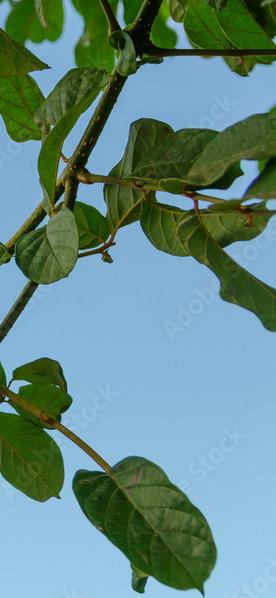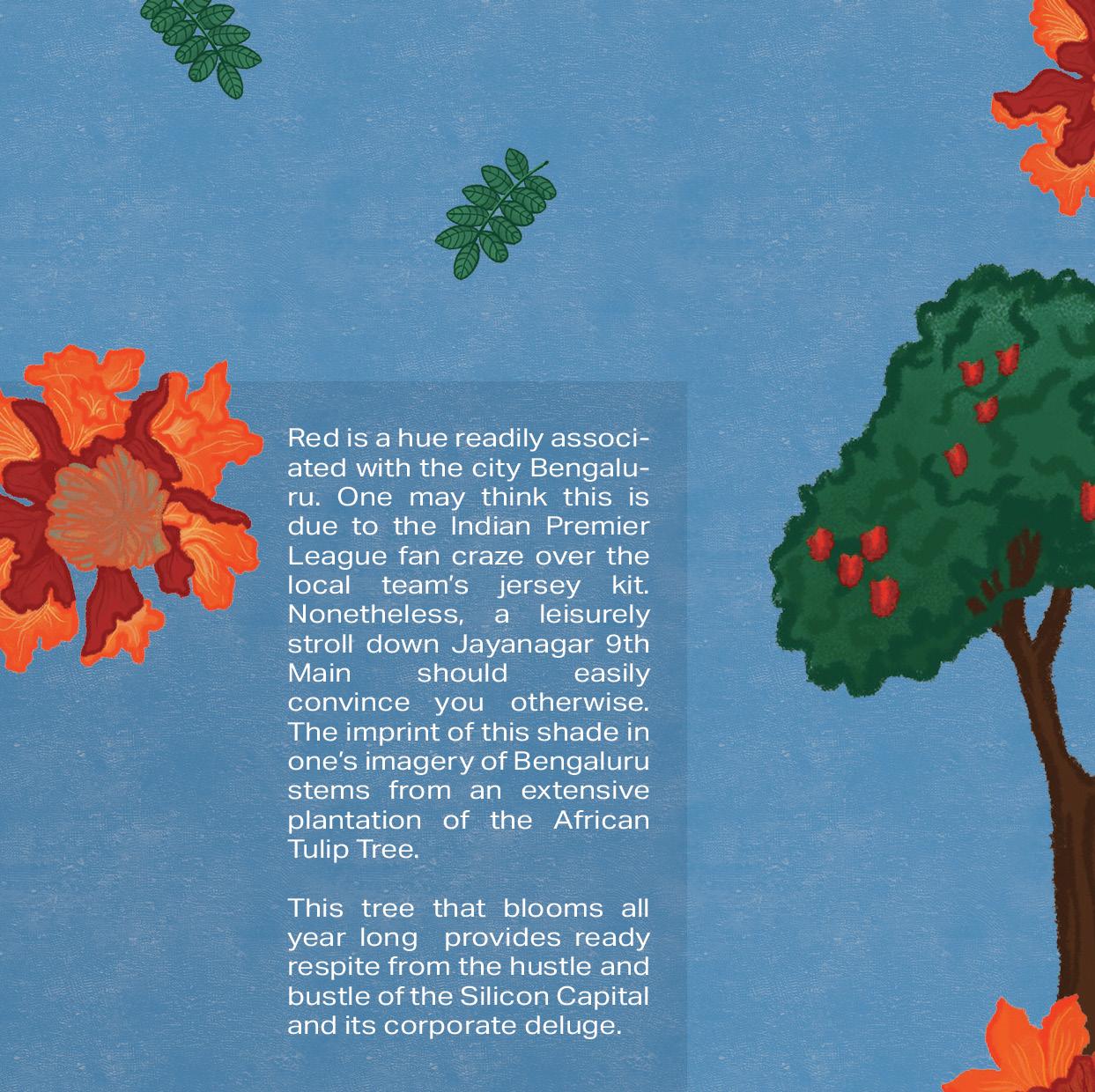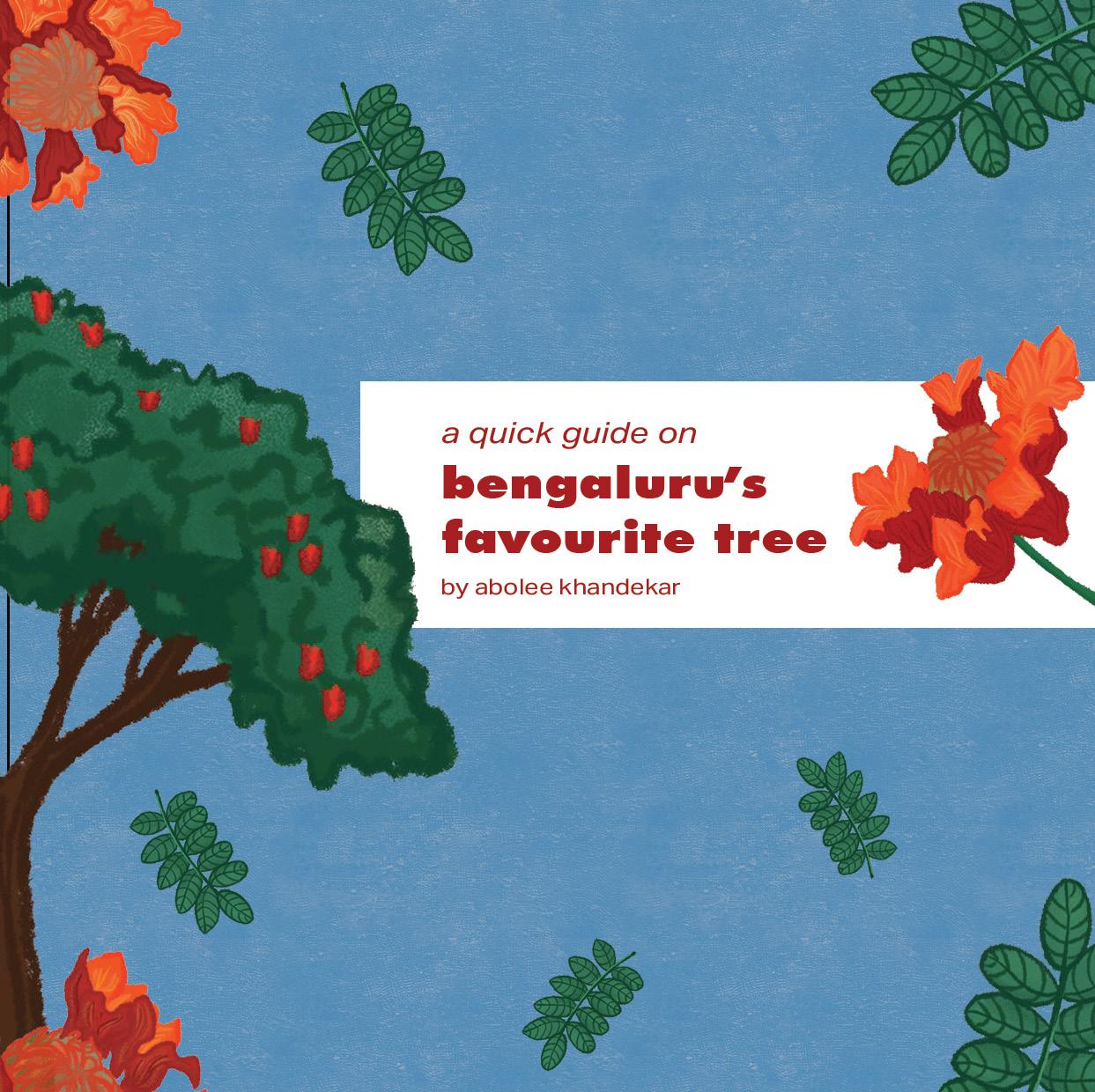
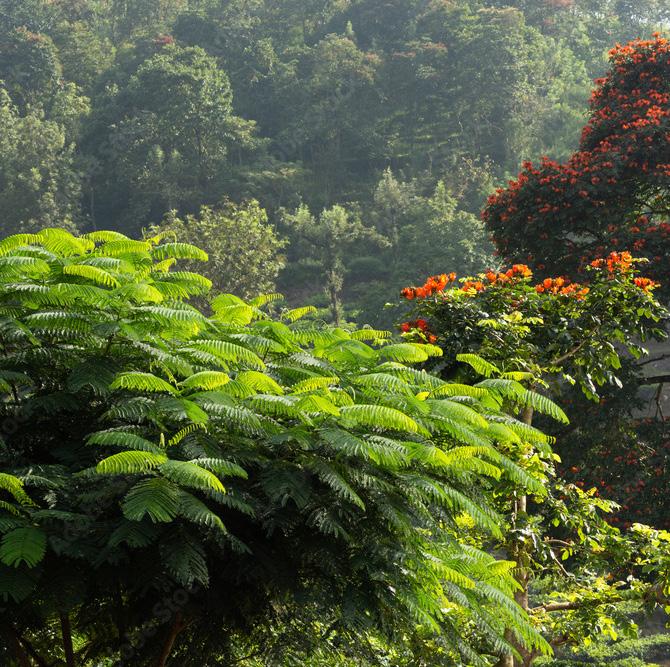

African Tulip Tree History Landscape Use of African Tulip Tree Morphological Characteristics Management 01 02 04 03 05

African Tulip Tree
Red is a hue readily associated with the city Bengaluru. One may think this is due to the Indian Premier League fan craze over the local team’s jersey kit. Nonetheless, a leisurely stroll down Jayanagar 9th Main should easily convince you otherwise. The imprint of this shade in one’s imagery of Bengaluru stems from an extensive plantation of the African Tulip Tree.
This tree that blooms all year long provides ready respite from the hustle and bustle of the Silicon Capital and its corporate deluge.
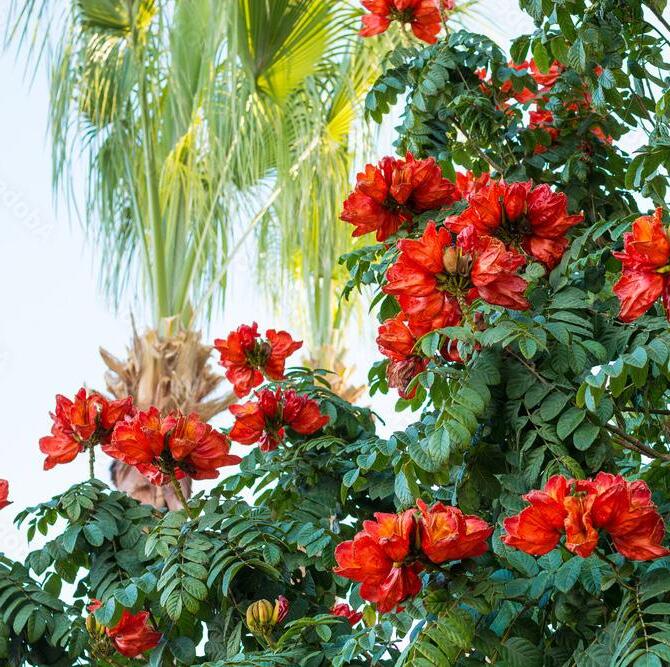
history
The African tulip tree belongs to the family, “Sterculiaceae”. It’s also known as a “flametree” or “flame-of-the-forest.”

The African Tulip’s (Spathodea campanulata) generic name comes from the Greek word ‘spathe’ (blade), because of the shape of the corolla or petal, while its specific name relates to a campanula, a name coined in 1542 by Leonhart Fuchs, a German physician and botanist, for the type of corolla with a broad, rounded base and a gradually expanded tube, like a church bell.
A native of tropical Africa, the African Tulip (Neeru Kayi Mara in Kannada) is supposed to have been introduced into India in the late 1900s as an ornamental plant. Growing to a height of almost 25m, and looking resplendent when in full bloom with its orange-red flowers with crinkly yellow borders, the tree is a common sight in Bangalore. The flowers hold a small pool of nectar at the bottom; when it rains, the diluted nectar makes an ideal thirst quencher for the wildlife on the tree.
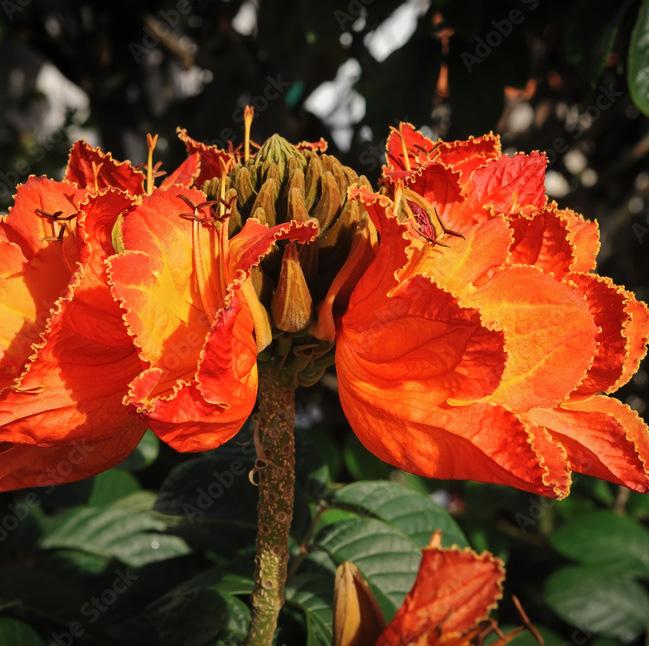
morphological characteristics
African tulip tree is a deciduous tree with a height of 10-20 meters. The tree may be evergreen in suitable climate conditions like in Bengaluru but is deciduous in cooler climates.
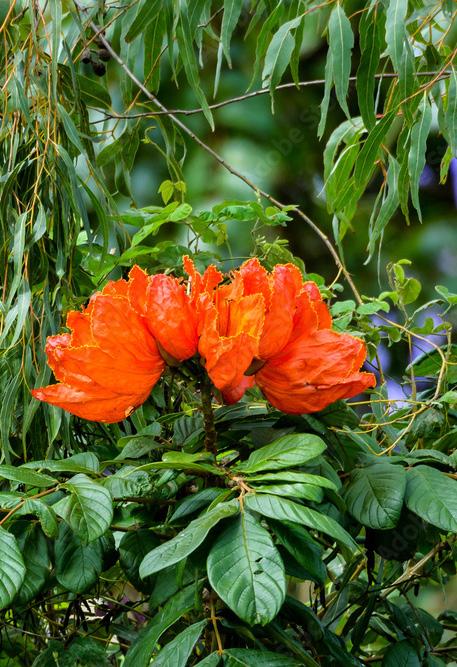
The bark of the tree is reddish brown and the bark peels off in long strips, which distinguishes it from other trees. Its trunk is straight, brownish white and easily branched. The tree has a white gum, which oozes out when the bark gets wounded.
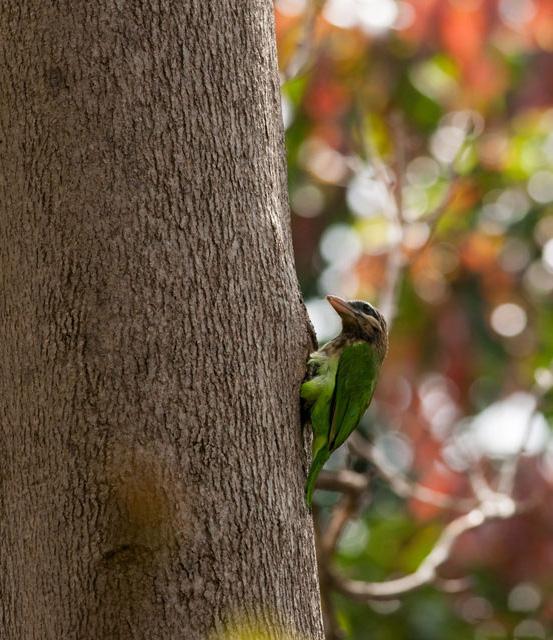
Leaves are odd pinnate compound leaves, entire, leaflets short petiolate, ovate-lanceolate or long elliptic; Inflorescences panicle or raceme, terminal, corolla campanulate, red or orange-red, single flowers, 10 cm.
Pinnate compound leaves of African tulip tree are opposite, with petioles up to 45 cm long; African tulip tree has 13-17 leaflets, leaves elliptic or obovate, 5-10 cm long, 3-5 cm wide.
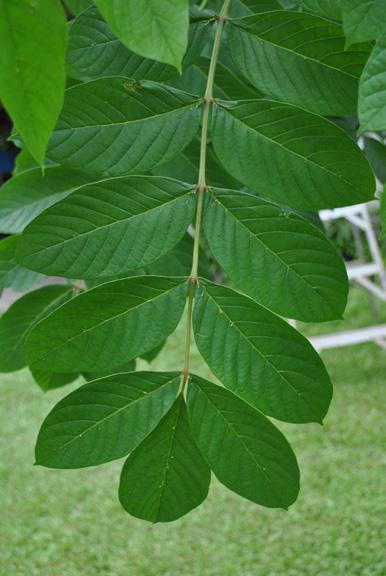
The flowers are large, clustered into a compact corymbiform raceme; Calyx is fossil-spathe, 5-10 cm long; Corolla is campanulate, enlarged on one side, 3-5 cm long, 5-6 cm in diameter, orange-red, yellow in the center, wrinkled. Flowers are bisexual and zygomorphic.
Capsule of African tulip tree is oblong prismatic, fruit petals red brown, nearly woody. Seeds have membranous wings.

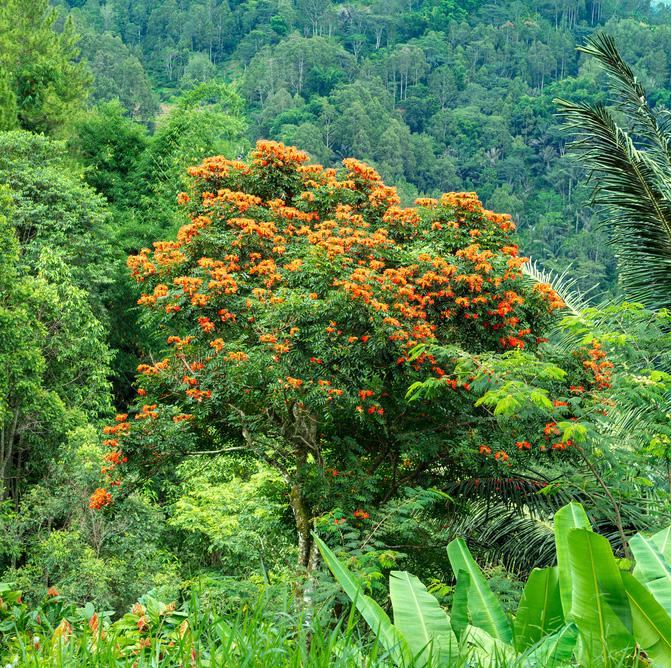
landscape use of african tulip tree
As a spherical arrangement, African tulip trees can be patchwork planted, cut branches, put branches and trimmed. They are planted on the lawn and dotted in the depths of the garden. The bright red fruits of African tulip trees give people a warm feeling in cold winter.
The ball of African Tulip Tree is arranged on both sides of the road or in the middle green belt in a regular manner, which can also play a role in landscaping and eye-catching. African tulip trees, as a combination of landscape woodland, can reflect the wild interest of nature.
A cousin to the rambunctious trumpet-vine, the African tulip tree tends to be invasive. They freely self-sow. In tropical climates, such as Hawaii and southern Florida, where it forms dense thickets that interfere with native growth, they are a menace. It is less problematic in drier climates.
However, the International Union for Conservation of Nature (IUCN) Invasive Species Specialist Group names this plant in their published list, 100 of the World’s Worst Alien Species. Once they grasp a piece of real estate or have a roothold, they basically outcompete native vegetation.

management
soil:
African Tulip Tree is best cultivated with loose, breathable and water-discharging soil. Although it likes rich soil, it will grow in nearly any well-drained soil.

irrigation:
Newly planted African tulip trees benefit from regular irrigation. However, once established, the tree requires little attention.
light:
African Tulip Tree grows with normal sunlight, lest the light is too weak to affect its normal growth.
temperature:
It requires a growing environment of 23 ~ 30 C, and the minimum temperature should not be lower than 10 C. If the temperature is too low, the tree will stop growing. When the temperature is too low in winter, warm measures should be taken in time to avoid frostbite.
fertilization:
African tulip trees do not have high requirements on fertilizers, but they need to ensure sufficient nutrients during its growth period. Composite or organic fertilizers are generally the main fertilizer, and thin fertilizer should be applied frequently, usually 3-5 times a year.
propagation:
African tulip tree propagation by cutting, sowing or high-pressure method, all appropriate in the spring, after the seeds germinate, generally in 5-6 afternoon can be flowering. African tulip trees require higher temperatures to flower.
pests and care:
It is rarely bothered by pests or disease. However, The most common form of damage that the African Tulip Tree suffers is caused by the fungus Phytophthora cinnamomi or water mold, which causes root rot and can render the plant unusable within a few years.

management
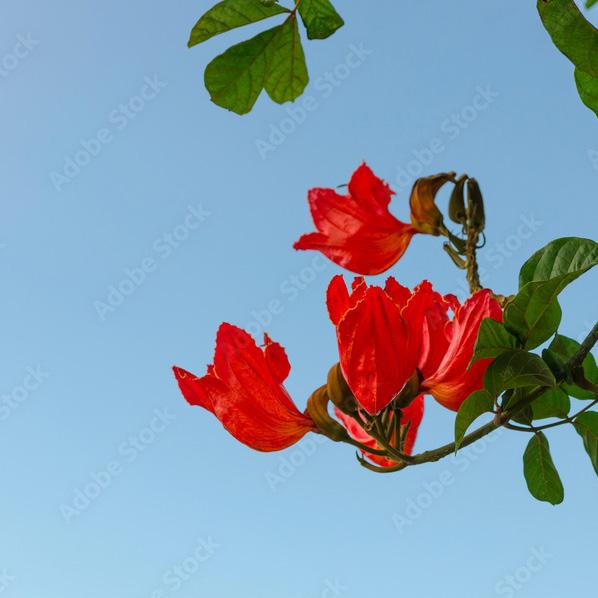
All pictures belong to respective owners.
Original cover graphic illustration by Abolee Khandekar.
